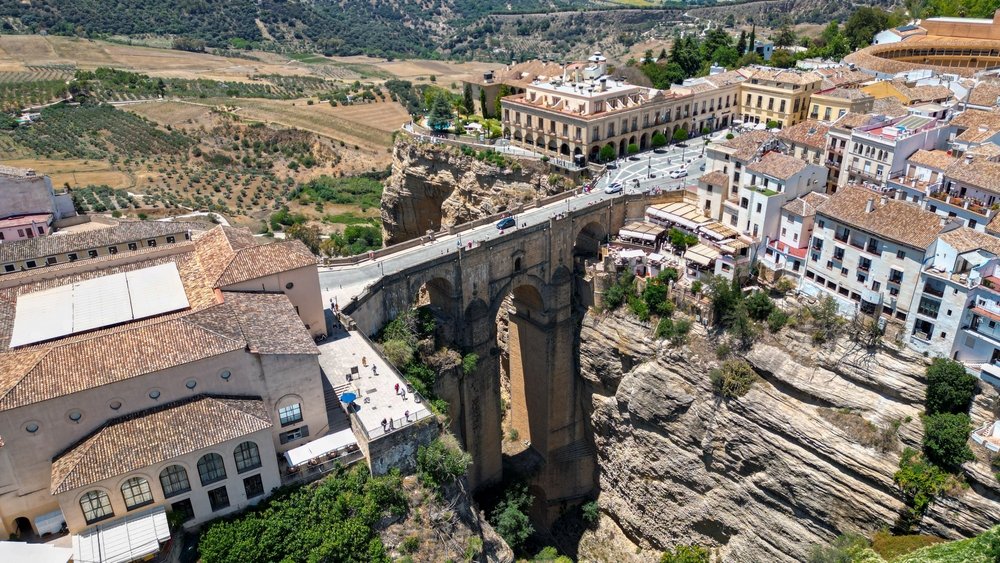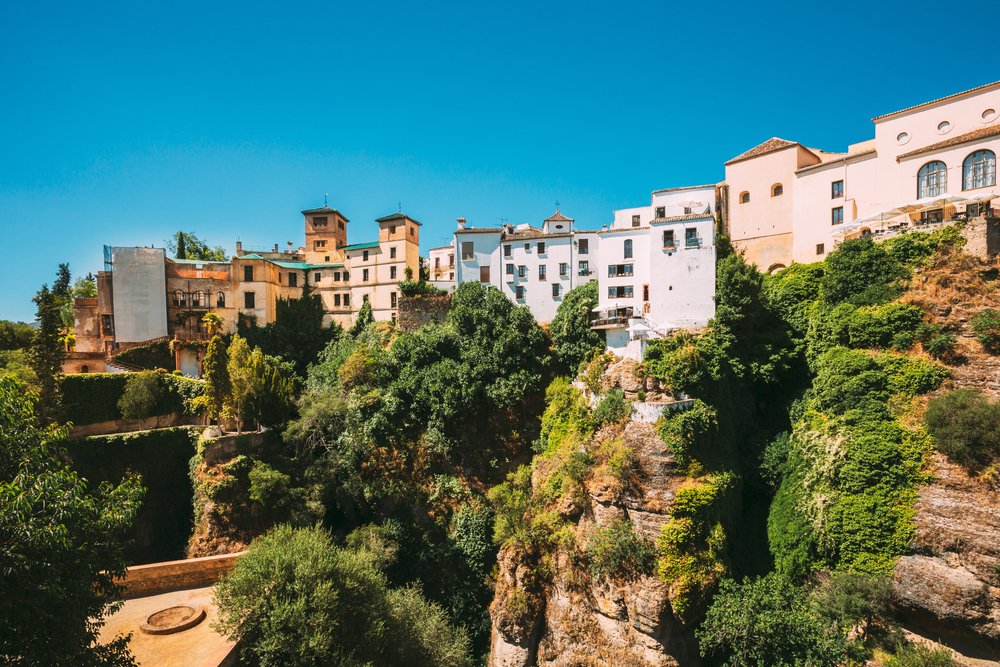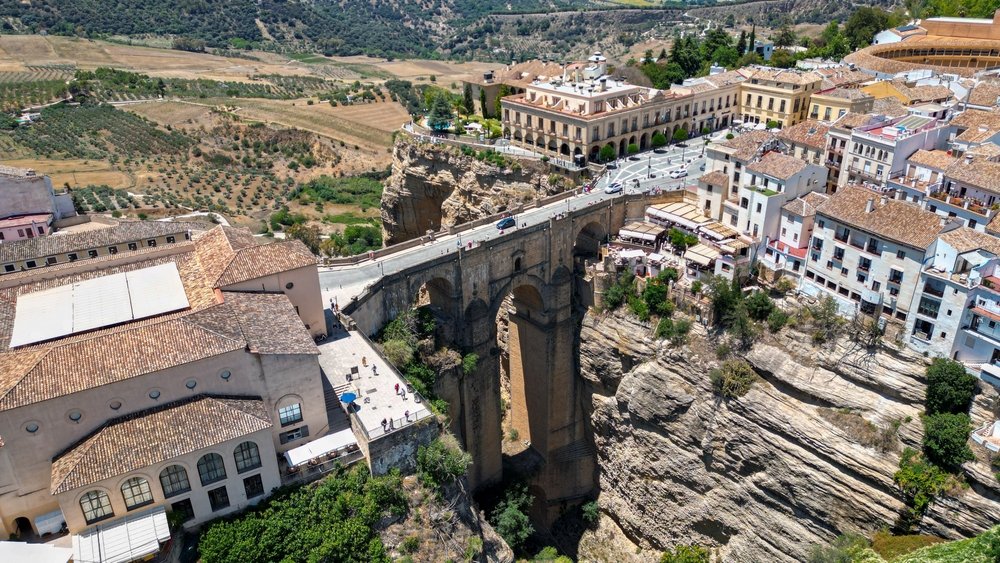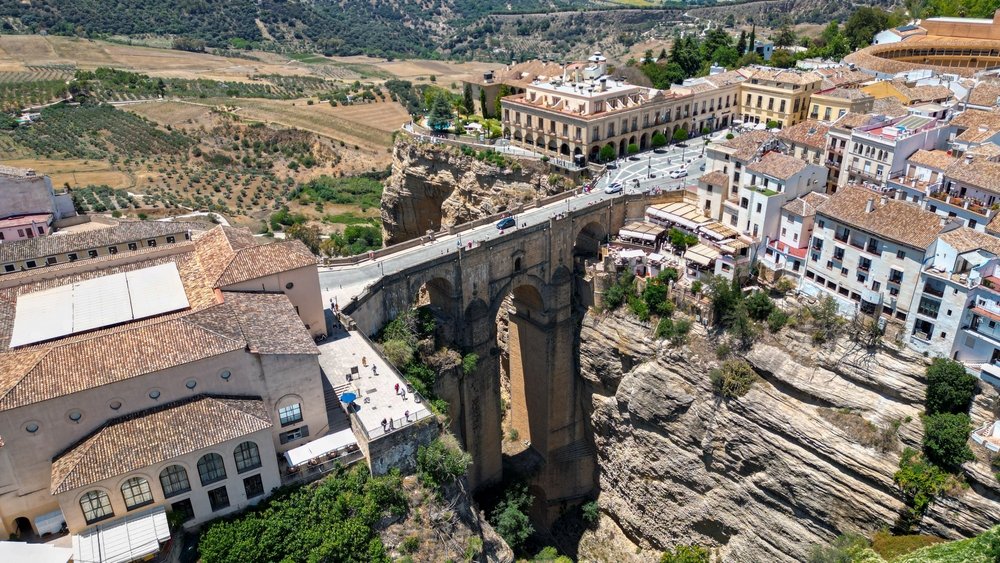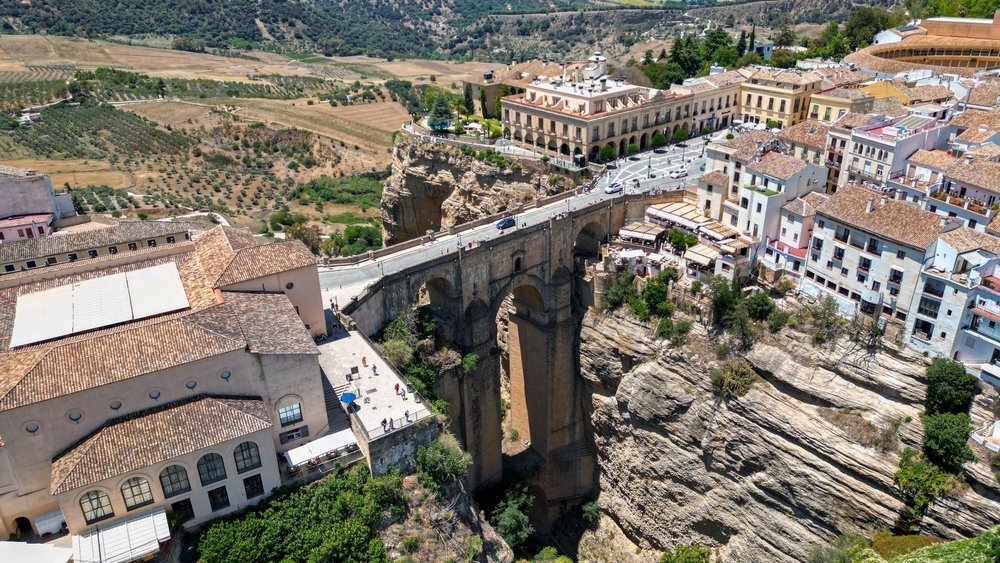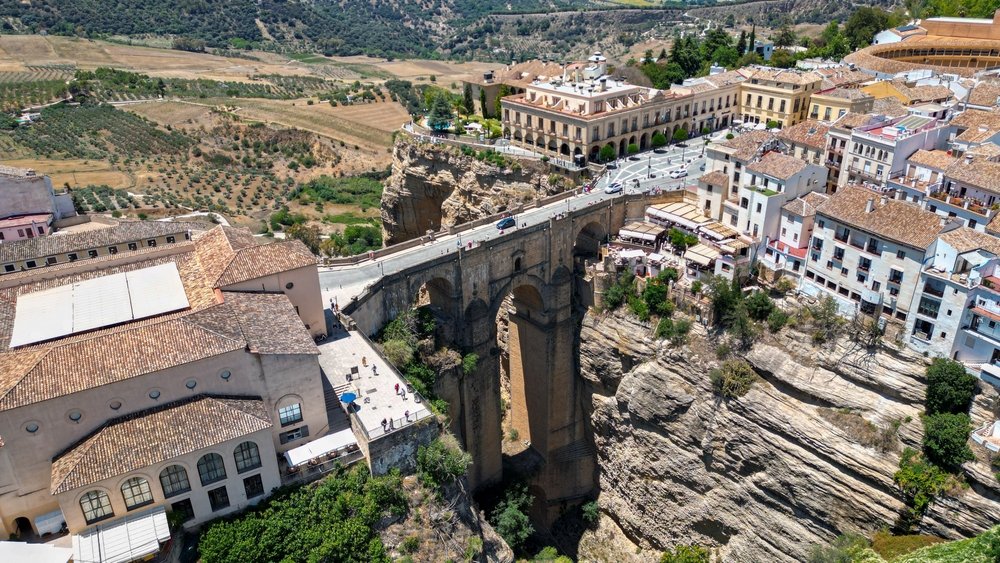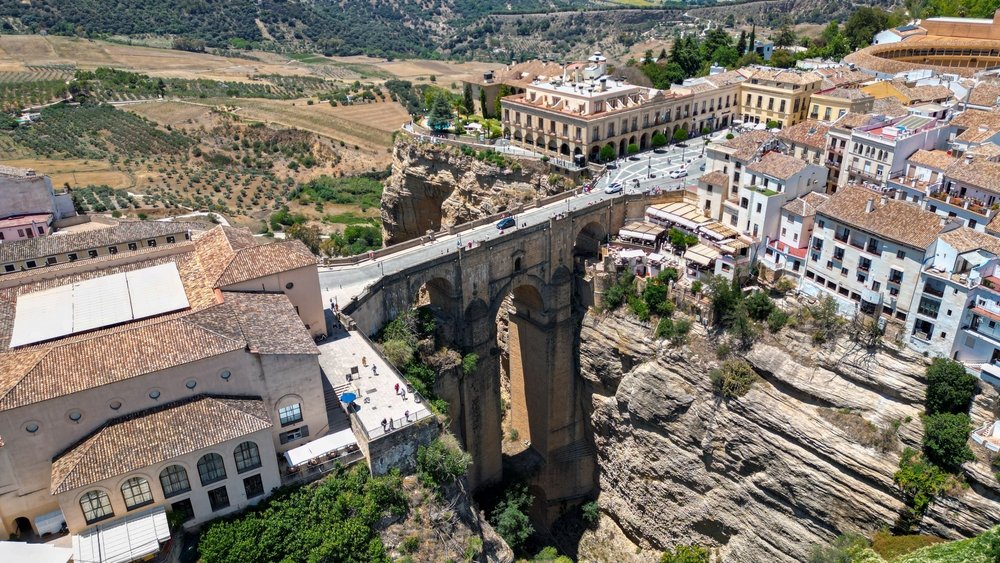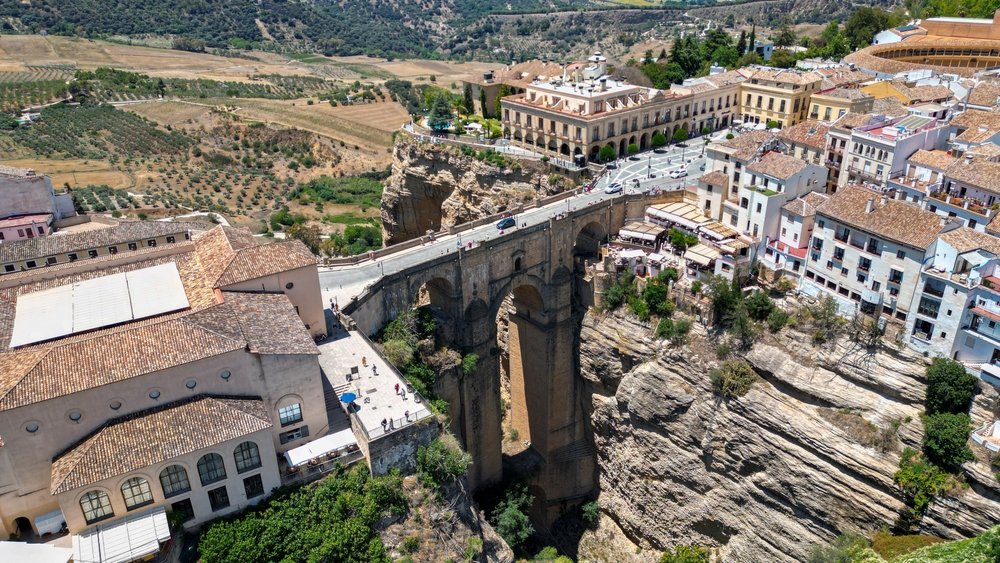The Casa del Rey Moro is a unique military construction that stands out due to its location, originality, and history. Located in Ronda, it dates back to the 18th century and was built over the remains of an ancient Arabic building.
It consists of three parts: a water mine from the Muslim period, a house in neomudéjar style, and a garden designed by Jean Claude Nicolas Forestier, declared a Site of Cultural Interest in 1943.
One of the most remarkable features of the Casa del Rey Moro is its impressive gardens. They boast lush vegetation, fountains, and statues. Known as the Hanging Gardens, they were designed by the French landscaper Forestier and were constructed in 1912 when the Duchess of Parcent was the owner of the Palacio del Rey Moro. At the heart of these gardens is a well known as the "Mina," which provided water from the Guadalevín River to the bottom of the gorge.
The "Mina" is a series of steep steps that descend down the Tajo de Ronda to the river. The purpose of the "Mina" was to overcome the height difference of 80 meters separating the city from the river. A waterwheel was used to extract water from the Guadalevín River, and slaves were responsible for transporting leather containers up and down from the riverbank to load and unload the water. The journey to reach the riverbed required crossing 365 steps.
The Muslim king Abomelic built this structure as part of the city’s defense. The building features a staircase carved into the rock and a military tower that served as a lookout for defense.
The house showcases typical architecture of the era. It has a central courtyard surrounded by columns and decorations reflecting elements of traditional Andalusian architecture.
Ronda was a strategic location during the Christian Reconquista and remained so for a long time. Part of this house, the Mina, was even more significant as it was identified as a weak point, allowing the troops of the Marquis of Cádiz to attack and disable the waterwheel. Thus, the water supply was cut off, and the city surrendered in just a few days.
Today, the Casa del Rey Moro is open to the public and serves as a museum that showcases the history of Ronda and the importance of its geographical location. Visitors can explore the gardens, the well, and the house itself to learn more about the rich heritage of the city
